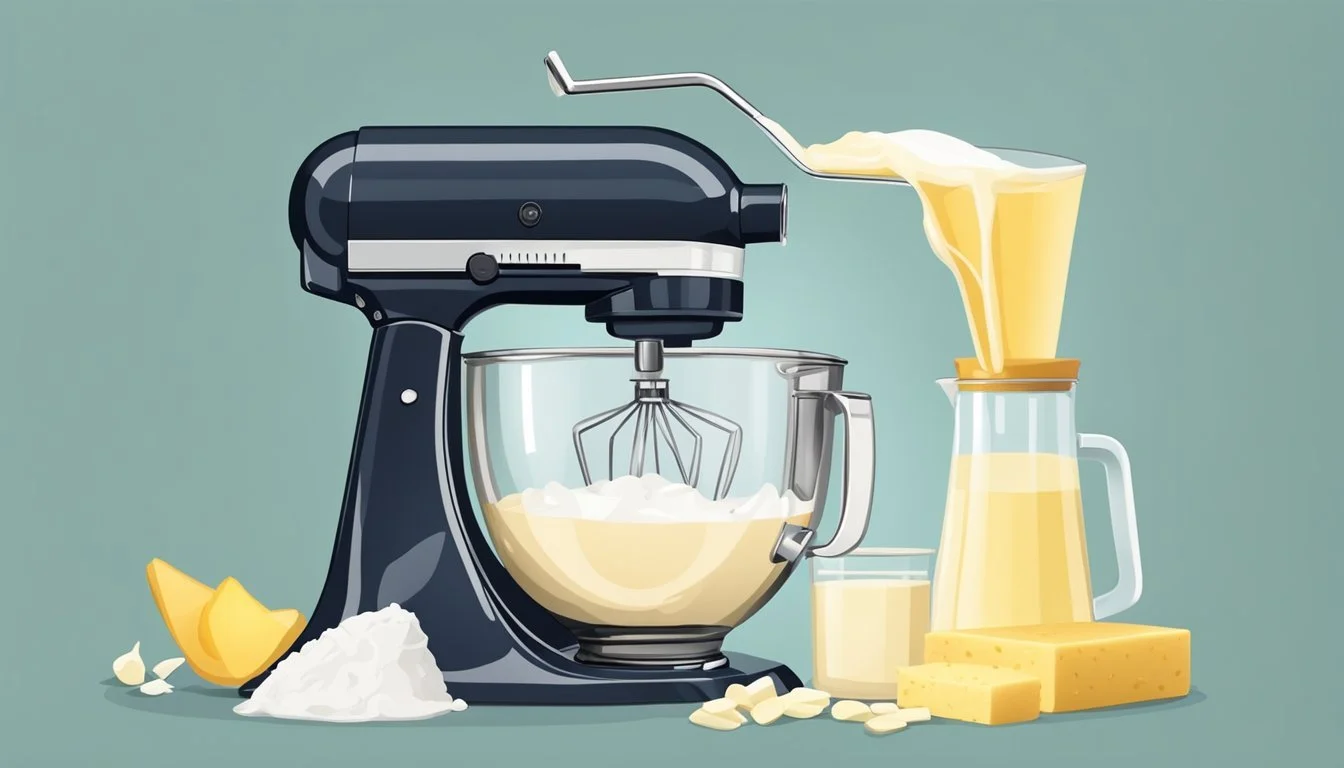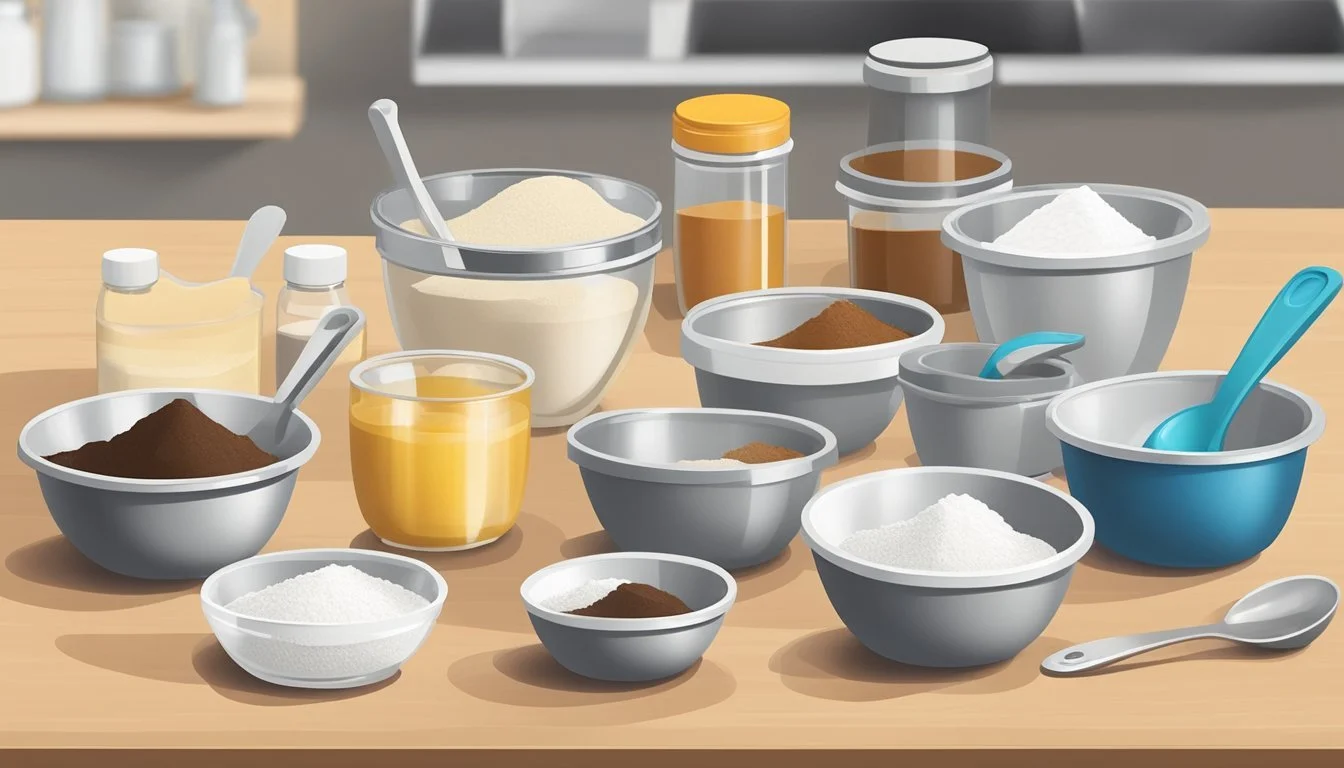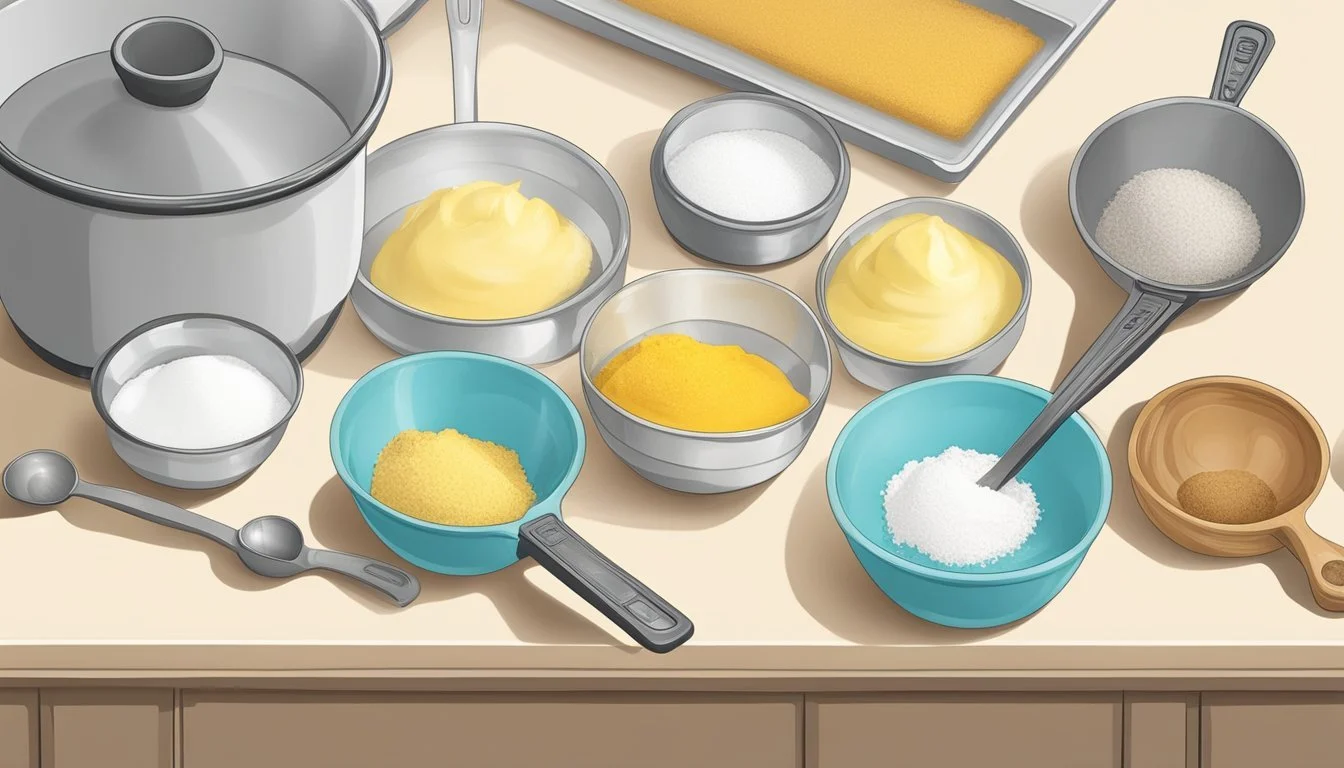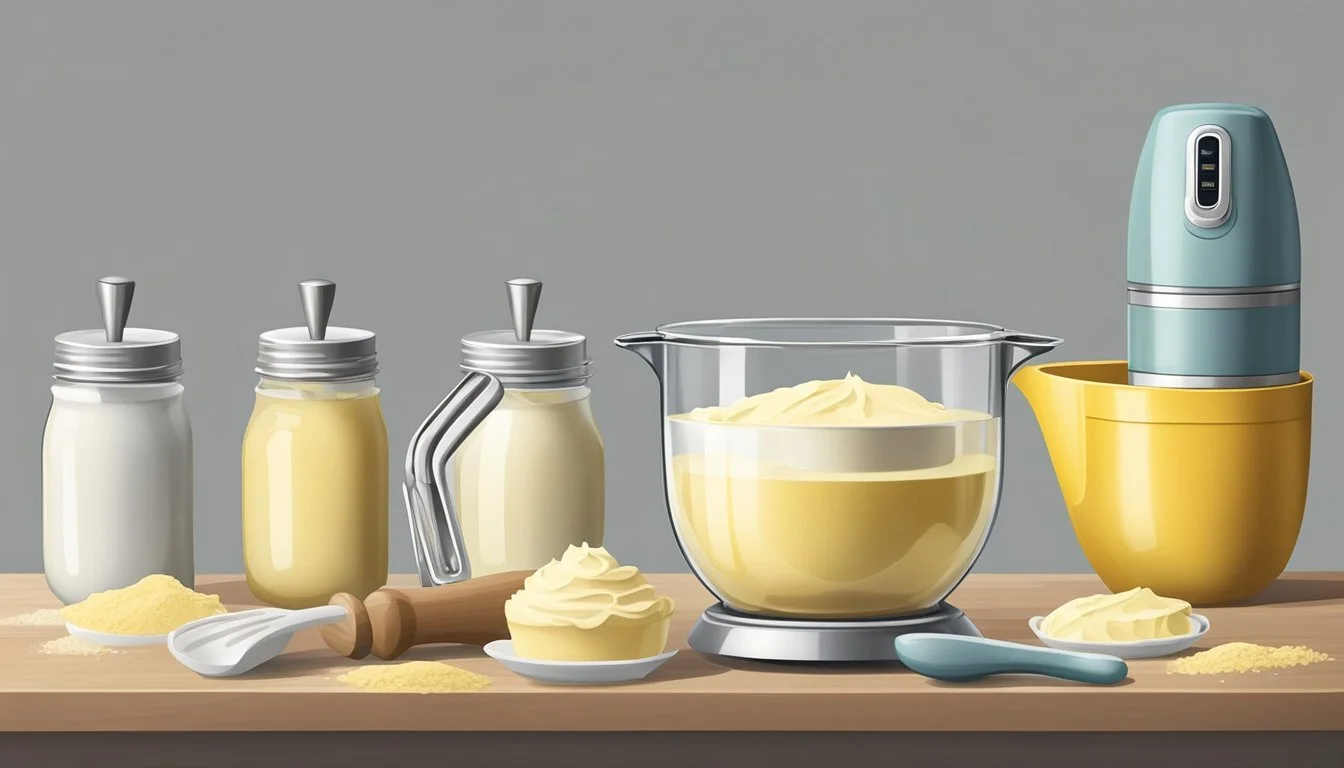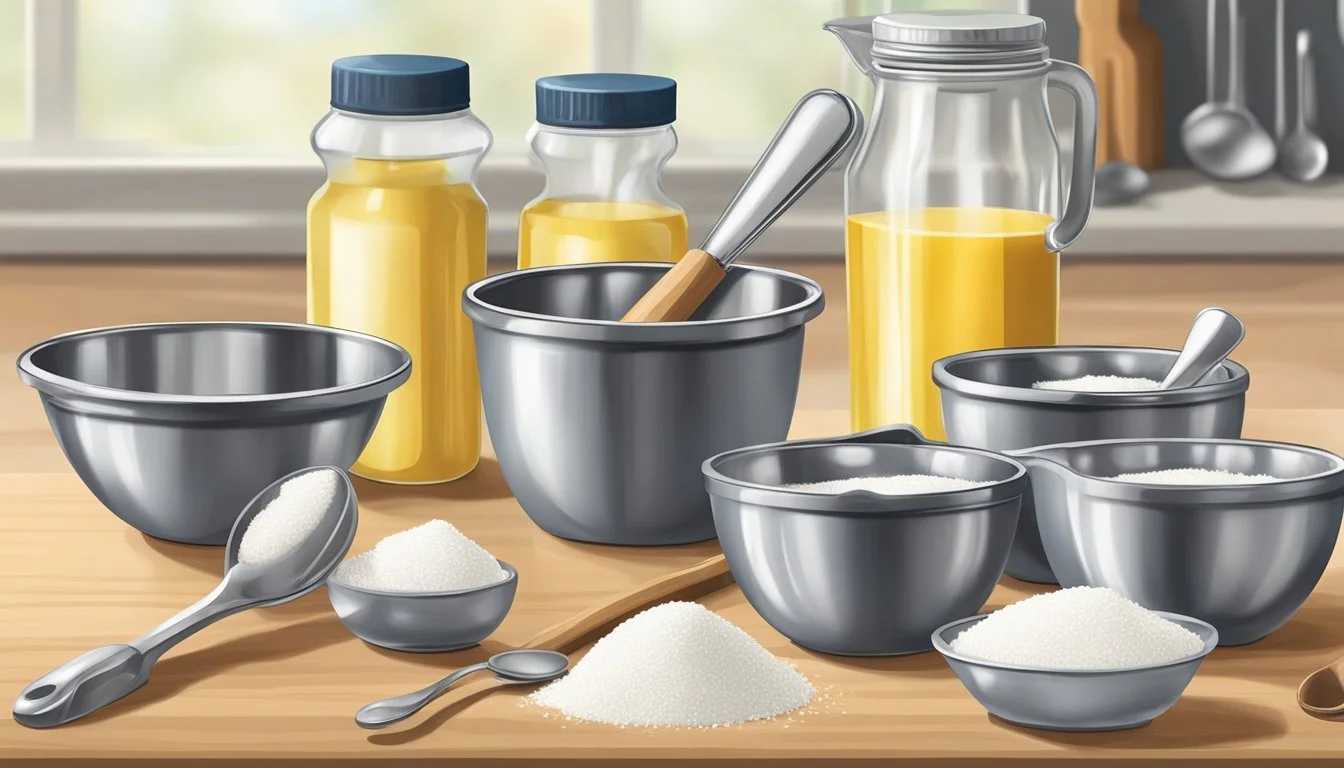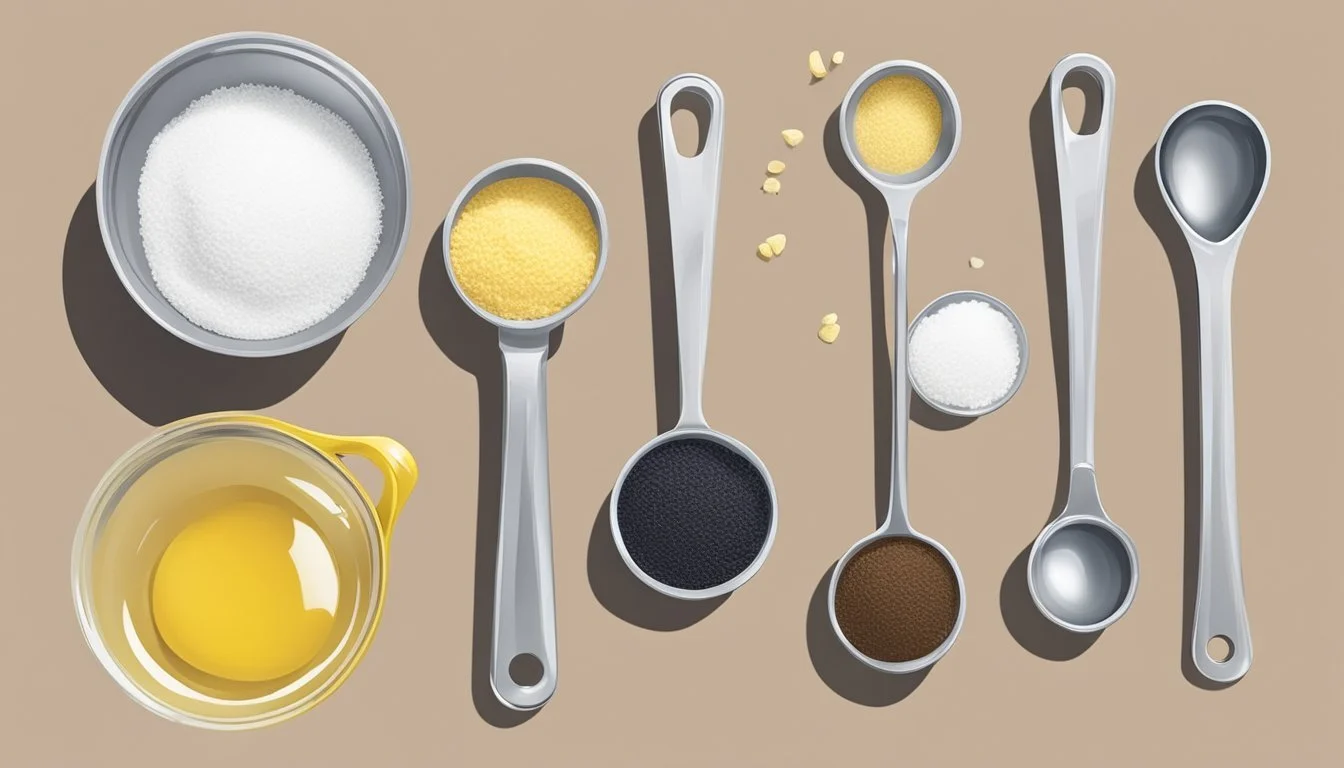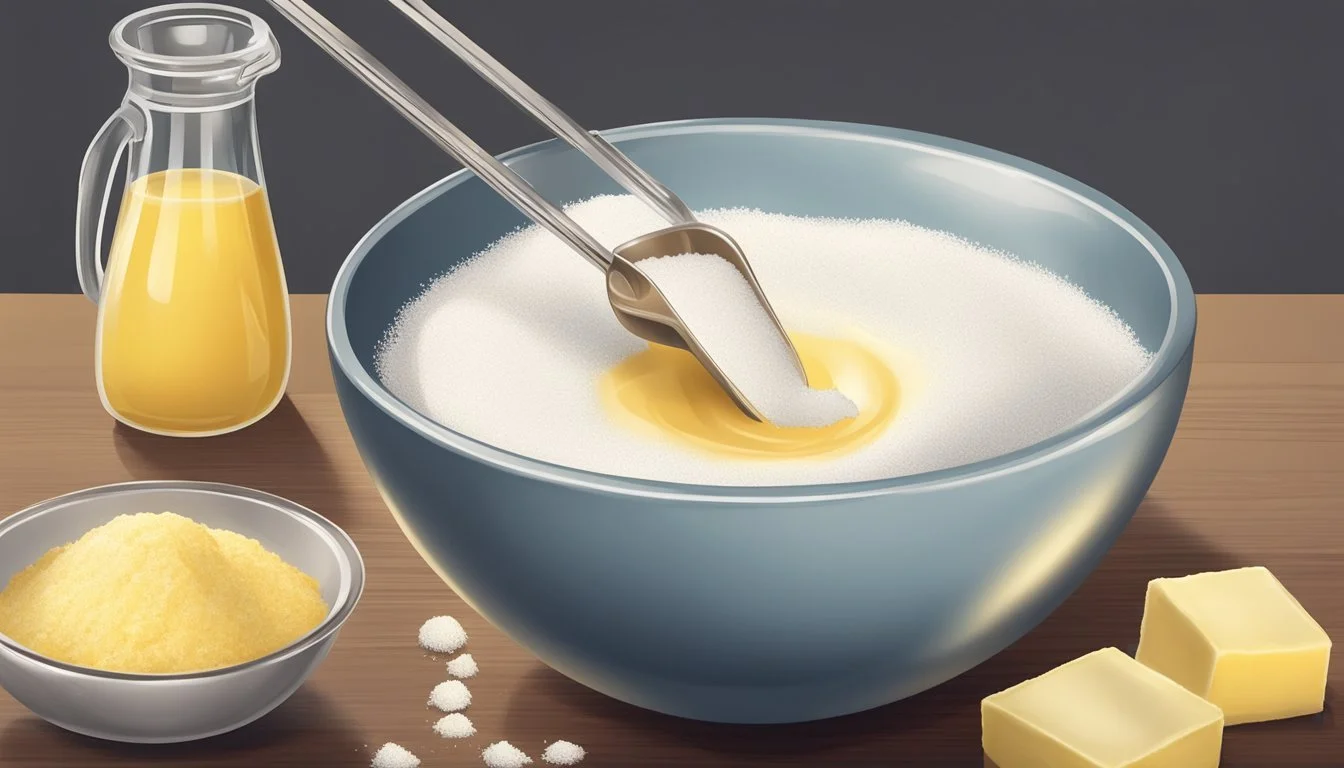How to Measure Ingredients Accurately for Perfect Homemade Frosting
Measuring ingredients accurately is a fundamental step in creating the perfect homemade frosting. Precise measurements ensure that the texture and flavor of the frosting are consistent and meet the expectations of any baker, from novices to experts. A classic buttercream or a simple vanilla icing relies on a balance between its core ingredients: powdered sugar, butter, and either milk or cream, coupled with flavorings such as vanilla extract.
While experienced bakers may have the knack for eyeballing ingredient amounts, for those wishing to replicate a recipe's intended result, using standardized measuring tools is key. A kitchen scale can provide the most accurate results, especially when dealing with powdered sugar, which can easily become compacted. When using measuring spoons and cups, ingredients should be leveled off to ensure that the right amount is added to the mixture.
Understanding the properties of each ingredient can also affect the outcome of the frosting. For example, the consistency of butter at room temperature will influence the smoothness of the frosting, and the type of milk or cream used can adjust its thickness. By paying attention to these details, bakers can produce frostings of desired textures and flavors for a variety of cakes and pastries.
Understanding Frosting Fundamentals
Before making frosting, it is crucial to have a fundamental understanding of the different types of frosting, the role of each ingredient, and nutrition basics.
Defining Frosting Types
Frosting is a sweet, often buttery glaze that is typically used to coat or decorate cakes and other baked goods. Frosting types can vary widely in texture and flavor, depending on their composition, from the light and airy meringue to the rich and creamy buttercream. Each type imparts a unique character and aesthetic to the cake it accompanies.
Role of Ingredients
The primary ingredients in frosting include sugar, fat (like butter or shortening), sometimes protein (in the form of eggs or meringue powder), and flavorings.
Sugar: Usually confectioners' sugar, provides sweetness and structure.
Fat: Butter or shortening lends creaminess and enables the frosting to hold shape.
Protein: When present, such as in meringue, helps stabilize the frosting.
The proportion and type of sugar and fat determine the consistency and texture, affecting spreadability and the ability to pipe the frosting. Accurate measuring ensures the intended outcome is achieved.
Nutrition Basics
From a nutritional standpoint, frosting is high in carbohydrates and calories mainly due to the sugar content. Fat also contributes significantly to the total calorie count while providing essential richness. Generally, frostings are considered an indulgence, and thus, nutritional content might not be the focal point, but it's important to be mindful of portion sizes and frequency of consumption.
Preparation Essentials
Proper preparation is a crucial step in ensuring a delectable homemade frosting. The reader will learn about the necessary tools to assemble and the importance of managing ingredients for precision in frosting recipes.
Gathering the Tools
One needs to gather specific tools to streamline the frosting making process. An electric mixer—either a stand mixer with a paddle attachment for thicker frostings or a whisk attachment for lighter, fluffier frostings, or a handheld mixer—is essential for achieving a consistent texture. A sturdy mixing bowl, preferably chilled, helps in keeping ingredients like heavy cream cold for better whipping. If the frosting requires piping, a piping bag with assorted tips should be within reach.
Essential tools required:
Electric mixer (stand mixer/handheld mixer)
Paddle attachment (for stand mixer)
Whisk attachment (for stand mixer)
Mixing bowl
Piping bag with tips (optional for decorating)
Ingredient Management
Accuracy in measuring ingredients is foundational to the success of a frosting recipe. Beginning with sifting powdered sugar ensures a lump-free consistency, which can be achieved using a sifter or a fine mesh strainer. Liquid components like milk or heavy cream should be measured in clear measuring cups for precision, and it's beneficial to have these ingredients at the temperature recommended by the recipe—they are often used at room temperature. Butter, a common base for many frostings, must be softened prior to use but not melted.
Tips for precise ingredient measurement:
Sift powdered sugar using a sifter or fine mesh strainer.
Measure liquids in clear measuring cups.
Bring ingredients like butter to room temperature before use.
Ingredients Measurement
Precision in measuring ingredients is crucial for success in a frosting recipe, ensuring the desired flavor, texture, and consistency are achieved.
Quantifying Solid Ingredients
When measuring solid ingredients such as unsalted butter, confectioners’ sugar, and cocoa powder, one should employ the spoon and level method. To accurately measure, one spoons the ingredient into the measuring cup or spoon and levels it off with a straight-edged utensil for a precise measure. This approach avoids the common pitfall of packing too much ingredient into the cup, which can lead to an overly rich and dense frosting. For granulated sugar and powdered sugar, consistency in measurement assures that the sweetness balances with the other flavors, particularly important in cream cheese frosting.
Butter: Use unsalted butter to control the salt content. Measure by packing the butter into a cup and leveling off with a knife.
Cocoa Powder: Over-measuring can result in a dry outcome. Spoon and level without shaking the cup.
Confectioners’ Sugar: Also known as powdered sugar, spoon and level for a light and airy frosting.
Measuring Liquid Components
In terms of liquid ingredients — like vanilla extract, cream, milk, and food color — accuracy ensures the frosting won’t be too stiff or too runny. A clear measuring cup with spout is recommended for liquids, and one should read the measurement at eye level to ensure accuracy. Use measuring spoons for smaller amounts of liquids. Whole milk or cream adds to the frosting's richness, while vanilla extract contributes to the flavor depth.
Milk/Cream: Add slowly to reach the desired consistency; one teaspoon at a time if the frosting is too thick.
Vanilla Extract: A small amount goes a long way; measure precisely to not overpower other flavors.
Food Coloring: Add drop by drop to achieve the perfect hue without altering the frosting’s texture.
The Creaming Process
The creaming process is a critical step in making homemade frosting, fundamentally affecting its texture and consistency. Proper execution ensures a smooth and fluffy frosting that will enhance any dessert.
Achieving Consistency
To achieve a consistent texture in frosting, one should start with butter that is at room temperature. Room-temperature butter is pliable yet still cool, which is essential for it to integrate with the sugar effectively. It is then combined with sugar and beaten until the mixture is homogenous. Scrape down the sides of the bowl frequently to ensure all ingredients are evenly incorporated. The goal is to have a uniform mixture without any sugar grains visible.
Incorporating Air
During the creaming process, the act of beating butter and sugar together is not just about mixing; it's about introducing air into the mixture. This is achieved by using a mixer to beat the butter and sugar on a medium speed until it appears light in color and fluffy in texture. The development of this airy structure is crucial because it helps to give the frosting its characteristic whipped quality. The creation of air pockets during creaming will result in a lighter, more spreadable frosting once all ingredients are combined.
Adding Flavor and Color
Creating the perfect frosting involves careful flavor and color integration to achieve both a rich taste and appealing appearance. Accurate measurements and the right techniques are essential to produce a delicious, visually striking result.
Infusing Flavors
When one seeks to infuse flavors into homemade frosting, precision is key. To craft a vanilla buttercream that's rich in taste, using pure vanilla extract is preferable. The complex, deep flavors of real vanilla can make a significant impact on the end result. One might typically use one teaspoon of pure vanilla extract per cup of frosting to start, adjusting to taste. Alternatively, for a different twist, almond extract imparts a distinctly warm and nutty flavor. Because of its intensity, almond extract should be used sparingly, with a recommended starting measure of half a teaspoon per cup of frosting.
Mixing in Colors
The visual appeal of frosting is equally as important as its taste. Food coloring offers a way to customize the look of your frosting to match any theme or preference. When incorporating color into frosting, one must begin with a conservative amount and steadily increase until the desired hue is achieved. This typically means adding the dye drop by drop or using gel-based color, which allows greater control over the intensity.
Color Addition Suggested Measurement Liquid Food Coloring Start with 1-2 drops, adjust as needed Gel Food Coloring Use a toothpick to add color, increase as desired
It's vital to ensure that colors blend thoroughly, resulting in an even tone throughout the frosting.
Proper Frosting Techniques
Creating the perfect frosting is both an art and a science, requiring precision in combining ingredients and skillful application to yield exquisite results for cakes, cupcakes, and cookies.
Combining Ingredients
One begins by meticulously measuring each ingredient. Ingredients must be at room temperature to ensure seamless integration. Start with butter that's creamy and light in color, indicative of proper softening. Powdered sugar should be sifted to prevent lumps, and added gradually to the butter while mixing. For tinted frosting, food color can be added a drop at a time to achieve the desired hue.
Ingredient Technique Butter Cream until light and fluffy. Powdered Sugar Sift and add incrementally. Liquid (Milk/Cream) Add slowly for consistency. Food Color Use sparingly for desired shade.
Applying to Confections
When applying frosting to cakes or cupcakes, use the appropriate tool like an offset spatula or piping bag for a professional finish. Piped decorations require consistency; hence, one must avoid overthinning the frosting. For cupcakes, a swirling motion from the center outward creates a classic look. In case the device's screen from going dark mid-process, be sure to keep it active. Preserve any leftover frosting in an airtight container to maintain its quality for further decorating tasks.
Finishing Touches and Presentation
Once the frosting is flawlessly mixed and the desired consistency is achieved, the final steps are crucial to elevate the overall appeal of desserts such as cakes, cupcakes, and cookies. Applying the frosting with finesse and considering presentation methods can transform a simple treat into an irresistible delicacy.
Decorating and Piping
For cakes and cupcakes, a piping bag fitted with the right tip can create a variety of designs, from elegant rosettes to precise swirls. For instance:
Vanilla Cake: A star tip can craft classic swirls that make a vanilla cake visually delightful.
Chocolate Cake: Utilize a round tip for seamless layers on a chocolate cake, enhancing its rich appearance.
Sheet Cake: Apply frosting evenly and embellish with sprinkles for a festive touch.
Layered Cake: Piping between layers ensures even frosting distribution and contributes to the cake's stability.
Cupcakes, both vanilla and chocolate, can be adorned with a high swirl or a simple dollop. For a sugar cookie or sugar cookie bars, a flat tip can spread a smooth layer; use a smaller tip for detailed designs.
Serving Suggestions
Presentation of frosted desserts should complement their decor. Consider these suggestions:
Cake: Present a layered cake on a pedestal stand for height and elegance.
Cupcakes: Arrange vanilla and chocolate cupcakes on a tiered display for visual variety.
Sugar Cookies: Serve decorated sugar cookies on a platter with doilies to accentuate their handcrafted look.
Leftover frosting can be used to adorn cookies; it's an opportunity to get creative with patterns. Adding sprinkles to frosted desserts before the frosting sets gives a delightful finish and appeal. With proper tools and a steady hand, anyone can present confectionery masterpieces that taste as good as they look.
Storage and Shelf Life
Managing the storage and shelf life of homemade frosting ensures its freshness for use in future baking projects. Appropriate storage techniques can significantly extend the usability of the frosting, whether one needs to store it for short-term or long-term durations.
Short-Term Storage
For short-term storage, the frosting should be placed in an airtight container to prevent the absorption of odors and to maintain its quality. The container should then be stored in the refrigerator where homemade frosting can typically last for at least 7 days.
Refrigerator storage tips:
Use glass or plastic containers with tight-fitting lids.
Store away from pungent foods to avoid flavor transfer.
Buttercream frosting maintains quality in the fridge for up to 1 week.
Extendibility via Freezing
When one wants to extend the shelf life even further, freezing the frosting is an effective method. Homemade frosting can be stored in the freezer for up to 3 months. Thawing should occur in the refrigerator to ensure a smooth texture upon reuse.
Freezing recommendations:
Place frosting in a container, leaving some space for expansion as it freezes.
Label the container with the date of storage for easy tracking of shelf life.
Thaw in the refrigerator, not at room temperature, to maintain optimal consistency.
Customizing Frosting Variations
Creating a perfect frosting requires an understanding of how to manipulate texture and flavor, as well as how to modify recipes for those with food allergies.
Adjusting Textures and Flavors
Texture: The texture of a frosting significantly affects both the taste and presentation of a cake. Buttercream frosting, known for its smooth and creamy consistency, can be adjusted to be stiffer or more spreadable:
For a thicker buttercream, such as for a decorator's frosting, one can add more powdered sugar to the recipe.
For a lighter, fluffier result, whipping cream can be incorporated, as seen in whipped cream frosting and Swiss meringue buttercream which uses egg whites for a silky smooth consistency.
Flavor: The flavor profile of a homemade vanilla frosting can be customized with simple adjustments:
For vanilla flavor, one can add pure vanilla extract to basic vanilla buttercream frosting.
To create chocolate buttercream, melting chocolate or incorporating cocoa powder into the vanilla base will do the trick.
Strawberry buttercream frosting achieves its taste by adding pureed strawberries or strawberry extract.
For scaling up, such as when needing to double the recipe, ensure measurements are proportionally increased to maintain flavor and texture.
Allergy Considerations
Catering to allergies without compromising on taste or texture is possible:
Egg-free: Swiss meringue buttercream, normally made with egg whites, can be substituted with marshmallow cream to create a marshmallow buttercream frosting with a similar texture without the allergen.
Dairy-free: Using dairy-free alternatives like margarine instead of butter in a vanilla buttercream frosting or non-dairy milk in a vanilla frosting recipe will create an allergy-friendly option.
When customizing frostings for those with food allergies, one must ensure that all ingredients are checked for potential cross-contamination.
Clever Usage of Leftovers
When it comes to using leftover frosting, home bakers have a plethora of imaginative options. From transforming icing into delightful new desserts to embellishing a variety of baked goods, no frosting needs to go unused.
Reinvention in Recipes
Leftover frosting can be creatively repurposed to enhance various desserts:
Cookies: Spread it on sugar cookies for a quick and easy treat.
Cupcakes: Use it as a filling for cupcakes by coring the center of the baked cupcakes and piping in the frosting.
Cake Balls: Mix with crumbled cake pieces to form cake balls, then freeze briefly before dipping in chocolate.
Dessert Toppings: Swirl into brownie batter before baking or dollop onto dessert bars for added flavor and texture.
Creative Decor
Leftover frosting serves as an excellent medium for decorative purposes:
Piped Decorations: Utilize different piping tips to add decorative borders or rosettes to cakes and cupcakes.
Themed Treats: Use colored icing to create themed decorations on sugar cookies.
Accentuate with Toppings: Sprinkle nonpareils, edible glitter, or chopped nuts over freshly piped frosting for a festive touch.
Using these smart and efficient techniques, bakers can ensure that leftover frosting elevates their desserts while reducing waste, proving that imagination in the kitchen can lead to both delicious and aesthetically pleasing results.
Troubleshooting and Fixes
Measuring ingredients accurately is critical for achieving the desired consistency in homemade frosting. Even experienced bakers can encounter issues when it comes to frosting, but knowing how to identify and resolve common problems can make all the difference.
Common Frosting Issues
Consistency Issues:
Frosting too thin: Can result in a liquid-like texture that does not hold its shape.
Frosting too thick: May be difficult to spread and can tear the cake.
Texture Problems:
Frosting lacking fluffiness: May appear dense and heavy.
Presence of air bubbles: Can cause an uneven surface and affect the frosting's appearance.
When scaling a recipe:
Doubling a recipe: It's important to maintain the ratios; failure to do so can alter the frosting's texture.
Solution Strategies
Achieving Creamy Consistency:
To thicken a thin frosting, gradually add small amounts of confectioners' sugar until the desired consistency is reached.
If frosting is too thick, incorporate heavy cream one tablespoon at a time.
Creating a Fluffy Texture:
For a fluffy texture, beat the butter for at least 3 minutes or until it's creamy and lightened in color, allowing air to whip into it.
Eliminating Air Bubbles:
To remove air bubbles, tap the mixing bowl on the countertop several times or let the frosting sit for a few minutes before using.
Adjusting for Larger Batches:
When doubling the recipe, ensure all ingredients are scaled proportionally to maintain the creamy frosting quality.
Advanced Techniques and Tips
In this section, the reader will learn how to refine their homemade frosting by perfecting texture and enhancing flavor through specific ingredient use and techniques.
Mastering Textures
Achieving the ideal texture in frosting hinges on the manipulation of fat content and temperature. For a rich and smooth consistency, one should utilize unsalted butter that is softened. This ensures the butter is pliable enough to whip into a light, airy structure without being so warm that it becomes oily. When creaming the butter, it should be beaten until it's pale and fluffy, which may take several minutes. For a lighter texture, consider adding cream, one tablespoon at a time, during the mixing process. The addition of cream aerates the frosting, making it silkier and more spreadable.
Proportional Ingredient Use for Texture:
Ingredient Amount Purpose Unsalted butter 1 cup (softened) Base for a rich texture Confectioners' sugar 3-4 cups Sweetness and stiffness Cream 2-4 tablespoons Lightness and spreadability Vanilla extract 2 teaspoons Flavor without affecting texture
Start with these proportions and adjust as necessary for desired stiffness and peak formation, keeping in mind that over-beating can lead to a grainy texture.
Elevation through Flavor
To elevate the flavor profile of homemade frosting, one must carefully select and measure their ingredients. The purity of vanilla extract can profoundly affect the taste; always opt for high-quality extract rather than imitation for a more authentic and less synthetic vanilla flavor. A pinch of salt can be used to balance sweetness and enhance the overall flavor profile; this should be done with a light hand to avoid making the frosting noticeably salty. For bakers in bake mode, experimenting with small amounts of citrus zest or liqueurs can introduce complex flavors.
Flavor Enhancement Guide:
Vanilla extract: 2 teaspoons for a notable yet delicate flavor.
Pinch of salt: A small pinch, less than 1/8 teaspoon, to cut through sweetness.
Optional flavors: Add 1 teaspoon of citrus zest or liqueur to introduce unique notes.
By carefully considering texture and flavor, one's homemade frosting can be transformed from a simple garnish to a standout component of any baked creation.
Nutritional Considerations
When crafting homemade frosting, one should consider its nutritional implications, especially the caloric content and the potential for incorporating healthier alternatives without compromising taste and texture.
Caloric Content Analysis
Homemade frosting, typically high in calories, primarily comprises sugar and fats like butter or heavy cream. The table below summarizes the average nutritional content for standard icing ingredients per tablespoon:
Ingredient Calories Protein (g) Carbohydrates (g) Butter (unsalted) 102 0.12 0.01 Powdered Sugar 49 0 12.6 Heavy Cream 52 0.31 0.42 Milk 9 0.49 0.72
These ingredients contribute to the overall calorie count and should be factored into one's daily caloric intake. Bear in mind that nutrition labels and recipe calculators can aid in precise measurements for dietary monitoring.
Healthier Alternatives
For those seeking reduced calorie options, several substitutions can offer a lighter variation of the classic frosting without drastically altering the flavor or consistency. Consider the following swaps:
Butter: Replace with Greek yogurt or mashed avocados to reduce fat content while retaining creaminess.
Sugar: Opt for lower-calorie sweeteners such as stevia or erythritol to cut down on sugar carbohydrates.
Heavy Cream: Skim milk or almond milk serve as lower-calorie substitutes that still provide the desired consistency.
Each alternative not only modifies the nutritional profile but also affects the final product's taste and texture. One should experiment with these options to achieve a balance between healthier ingredients and satisfactory flavor.

